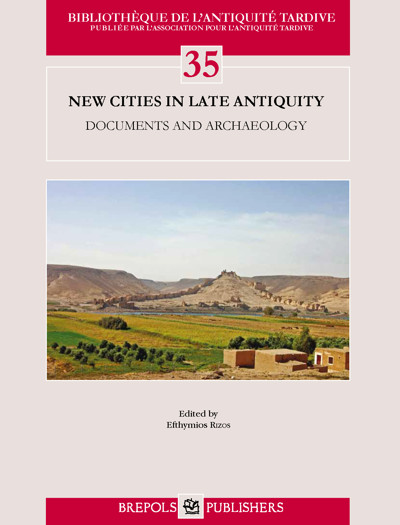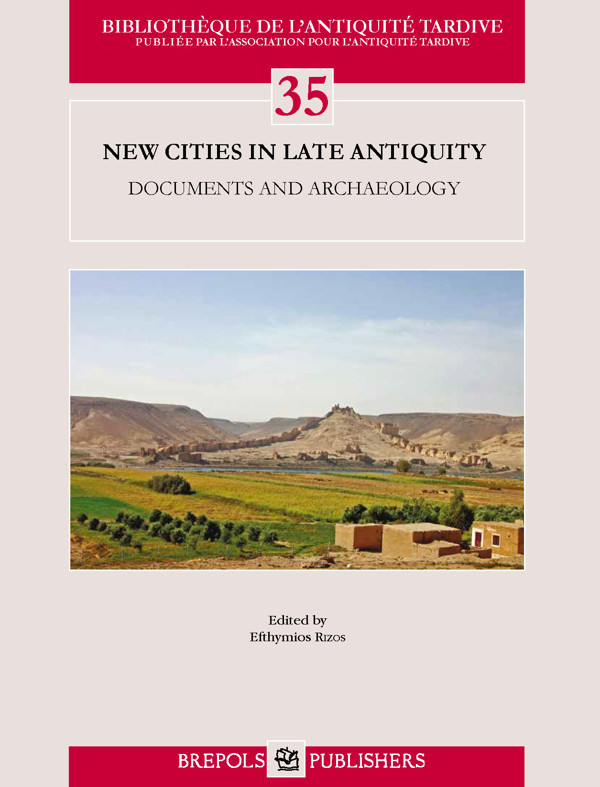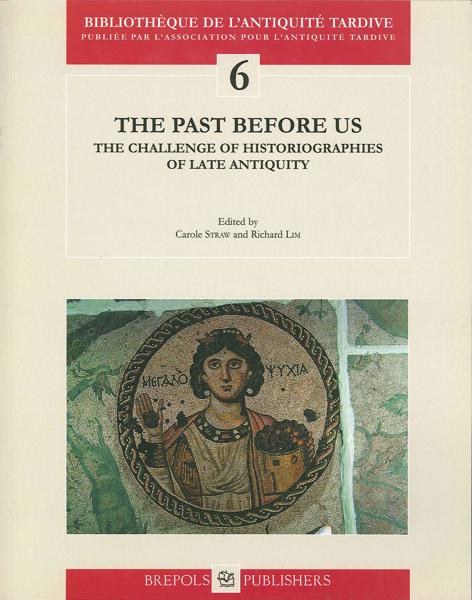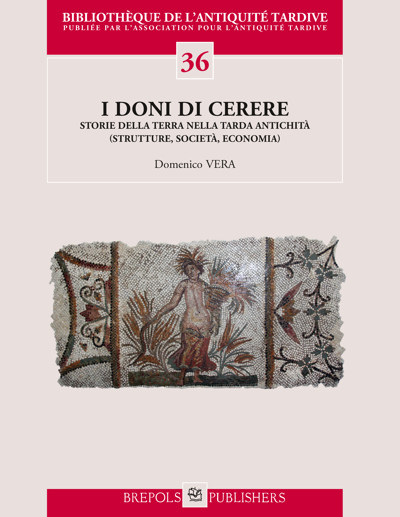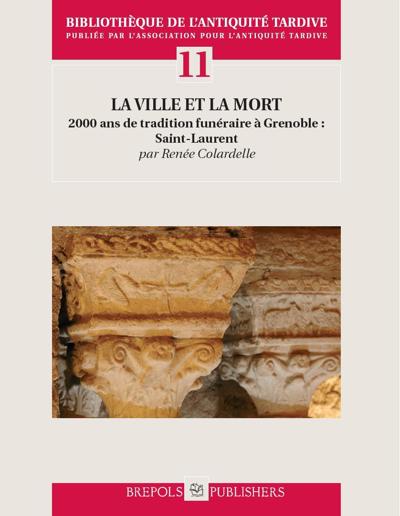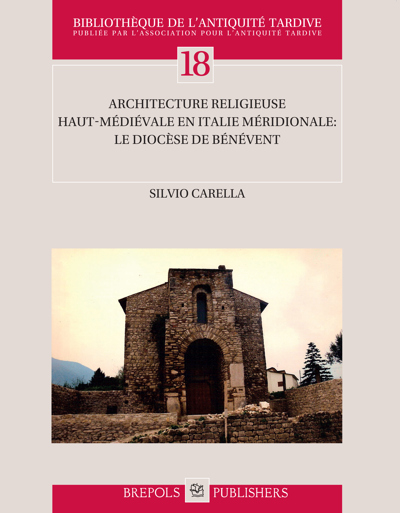
- Pages: 297 p.
- Size:216 x 280 mm
- Illustrations:170 b/w
- Language(s):English, French, German
- Publication Year:2017
- € 90,00 EXCL. VAT RETAIL PRICE
- ISBN: 978-2-503-55551-5
- Paperback
- Available
A collection of essays on the archaeology of newly built cities of Late Antiquity (ca. AD 300-600)
« C’est là une contribution originale et fort intéressante à l’étude du fait urbain dans
l’Antiquité tardive. » (Nicolas Beaudry, dans L’antiquité classique, 87, 2018, p. 702)
“Die Forschung zur spätantiken Urbanistik wird von dem Band profitieren; er stellt einen wichtigen Einstieg in das Thema der spätantiken Neu- und Wiedergründungen im Osten des Römischen Reichs dar und regt zur Vertiefung und Ausweitung an.” (Nadin Burkhardt, in Historische Zeitschrift, 309/1, 2019, p. 167-168)
“Vista nel suo insieme, questa galleria di immagini rende a mio parere nel migliore dei modi l’idea di complessità conoscitiva della materia che abbiamo di fronte, la ricchezza delle acquisizioni recenti e la molteplicità delle prospettive conoscitive che è possibile percorrere. Uno spunto di riflessione per chiunque intenda occuparsi di città tardoantica e protobizantina nel prossimo decennio.” (Enrico Zanini, in Medioevo Greco, 19, 2019, p. 455)
“This is welcome contribution to research.” (Alexander Skinner, in Ancient West and East, 20, 2021, p. 445)
Efthymios Rizos is a Research Associate at Oxford University. He studied at the Universities of Thessaloniki and Oxford (Dphil) and held postdoctoral fellowships at Koç University and the Netherlands Institute in Turkey. His research focuses on various aspects of late antique culture, especially on urbanism in the Balkans and Anatolia, architectural history, the cult of saints and hagiography.
The beginning of Late Antiquity was marked by the foundation of Constantinople, the largest city ever founded by the Romans. Yet this was also the dawn of an era of hardships which undermined the ability, and perhaps need, of the Roman Empire to found new cities in its provinces. Active urbanisation after the late third century AD may appear paradoxical or unexpected to those who associate Late Antiquity with urban recession. Yet new cities continued to be founded, asserting the urban character of the late Roman state and society, which knew no better way of ruling and defending their lands than through cities. Foundations, re-foundations, relocations, or expansions of cities are particularly important events in urban history, encapsulating with clarity the realities, needs, and ideals of urbanism in each historical period. What was necessary for a settlement in order to be called a city? What were the functions a city was expected to perform? For the late antique period, answers to these questions tend to be sought for in the transformations of pre-existing Greco-Roman urban environments.
This volume offers a different perspective on the debate, exploring the application of late antique urban ideals ‘on virgin ground’. Based on recent archaeological fieldwork and synthetic studies, twenty papers outline the state of research and discuss the motives and products of city-building from the late third to the seventh centuries AD.
Le début de l’Antiquité tardive fut marqué par la fondation de Constantinople, la plus grande ville jamais fondée par les Romains. En même temps, ce fut aussi l’aube d’une ère de difficultés qui a sapé la capacité et peut-être le besoin de l’Empire romain de fonder de nouvelles villes dans ses provinces. L’urbanisation active après la fin du troisième siècle après J.-C. peut paraître paradoxale ou inattendue pour ceux qui associent l’Antiquité tardive à la récession urbaine. Pourtant, de nouvelles villes ont continué à être fondées, affirmant le caractère urbain de l’État et de la société du monde romain tardif, qui ne connaissaient pas une meilleure façon de gouverner et de défendre leurs terres que par les villes. Les fondations, refondations, réimplantations ou expansions de villes constituent des événements particulièrement importants dans l’histoire urbaine, puisque cela reflète avec clarté les réalités, les besoins et les idéaux de l’urbanisme dans chaque période historique. Qu’est-ce qui était nécessaire pour qualifier de ville un habitat ? Quelles fonctions y étaient exigées ? Pour la période tardo-antique, on cherche généralement les réponses à ces questions dans les transformations des environnements urbains gréco-romains préexistants.
Ce volume offre une perspective différente, en explorant l’application des idéaux urbains tardo-antiques « sur terrain vierge ». Sur la base de travaux archéologiques récents et d’études de synthèse, vingt articles esquissent l’état de la recherche et discutent les motifs et les résultats de la construction de villes de la fin du troisième au septième siècle.
Acknowledgements
Efthymios Rizos, Introduction
John Bintliff, Aspects of Settlement Change in Late Antiquity from Regional Survey Evidence
Efthymios Rizos, New cities and new urban ideals, AD 250-350
Orsolya Heinrich-Tamáska, Castellum – Castrum – Civitas ? L’évolution fonctionnelle des nouveaux établissements de l’antiquité tardive en Pannonie et en Mésie Seconde: étude comparative
Martine Assénat et Antoine Pérez, La topographie antique d’Amida (IIIe siècle après J.-C. – VIe siècle après J.-C.) d’après les sources littéraires
Emanuele E. Intagliata, Palmyra and its Ramparts during the Tetrarchy
Efthymios Rizos and Mustafa Hamdi Sayar, Urban Dynamics in the Bosphorus Region during Late Antiquity
James Crow, New Cities of Late Antiquity: Theodosiopolis in Armenia
Martin Gussone und Dorothée Sack, Resafa / Syrien. Städtebauliche Entwicklung zwischen Kultort und Herrschaftssitz
Sylvie Blétry, L’urbanisme et l’habitat de la ville de Zénobia-Halabiya : résultats de la mission franco-syrienne (2006–10)
Elİf Keser-Kayaalp and Nİhat Erdoğan, Recent Research on Dara/Anastasiopolis
Albrecht Berger, Mokisos – eine kappadokische Fluchtsiedlung des sechsten Jahrhunderts
Marlia Mundell Mango, Androna and the Late Antique Cities of Oriens
Carolyn S. Snively, Golemo Gradište at Konjuh: A New City or a Relocated One?
Vujadin Ivanišević, Main Patterns of Urbanism in Caričin Grad (Justiniana Prima)
Javier Martínez Jiménez, Water Supply in the Visigothic Urban Foundations of Eio (El Tolmo de Minateda) and Reccopolis
Günder Varİnlİoğlu, ‘Built Like a City’: Boğsak Island (Isauria) in Late Antiquity
Georgios Deligiannakis and Vassileios Karabatsos, Palatia of Saria, a Late Antique ‘Nēsopolis’ of Provincia Insularum: A Topographical Survey
David Hill, Håkon Roland and Knut Ødegård, Kastro Apalirou, Naxos, a Seventh-Century Urban Foundation
Jean-Michel Spieser, Villes neuves dans l’Antiquité Tardive. Conclusion
